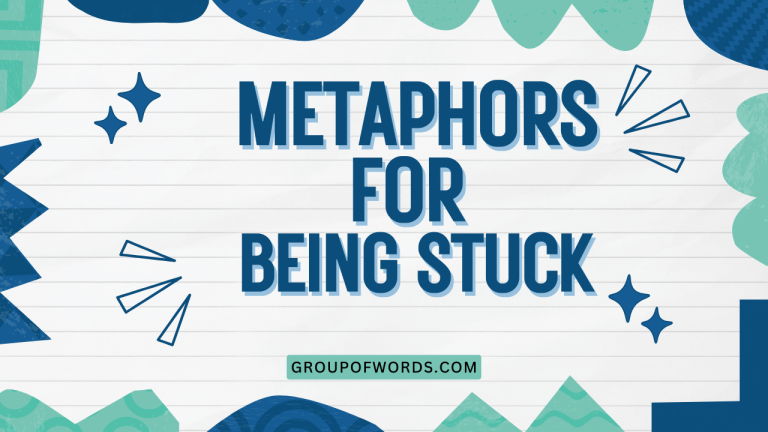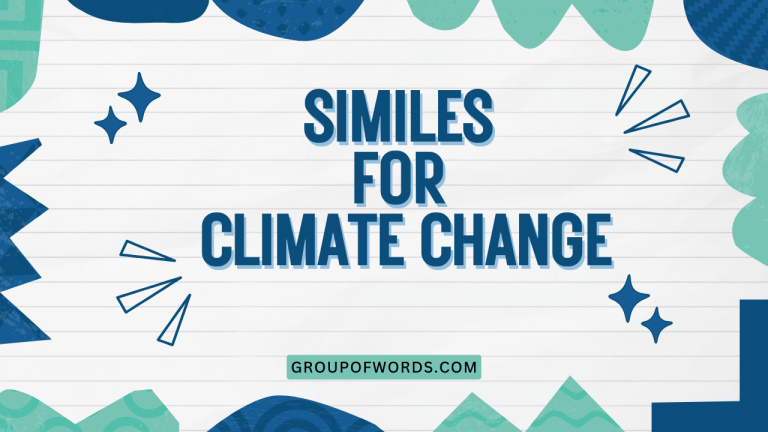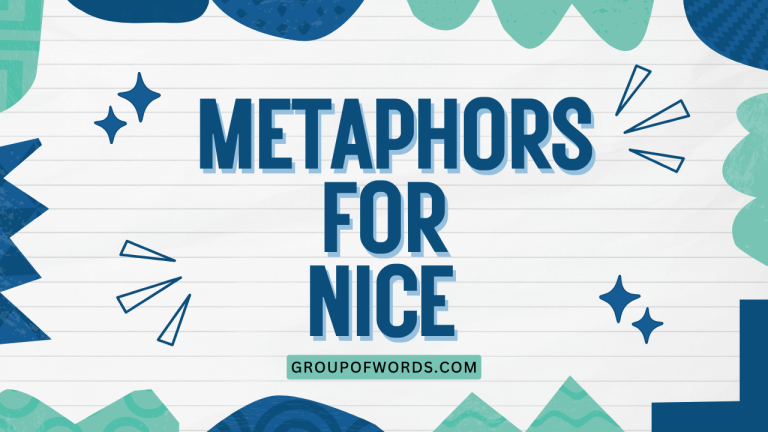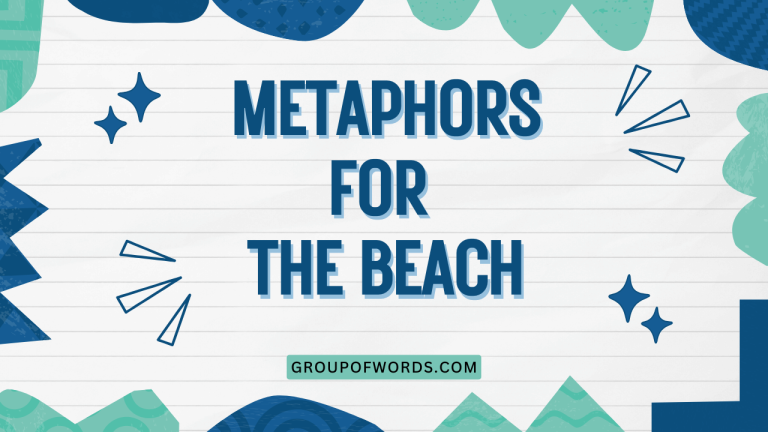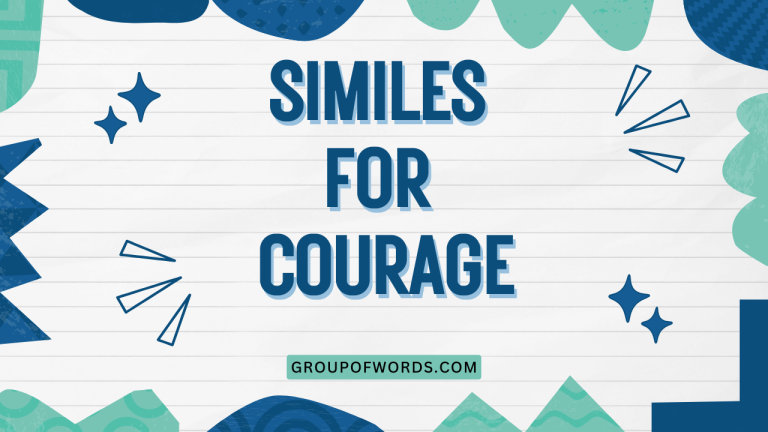Similes for Fun: Mastering Figurative Language
Similes are essential tools for writers and speakers, allowing us to create vivid images and comparisons that resonate with our audience. Understanding how to use similes effectively can transform your writing from plain to poetic, making it more engaging and memorable.
This article delves into the world of similes, exploring their definition, structure, types, usage rules, common mistakes, and providing ample examples and practice exercises. Whether you are a student, a teacher, or simply someone who enjoys playing with language, this guide will equip you with the knowledge and skills to master the art of similes.
Table of Contents
- Definition of Simile
- Structural Breakdown of Similes
- Types of Similes
- Examples of Similes
- Usage Rules for Similes
- Common Mistakes with Similes
- Practice Exercises
- Advanced Topics in Similes
- Frequently Asked Questions
- Conclusion
Definition of Simile
A simile is a figure of speech that directly compares two different things using the words “like” or “as.” The purpose of a simile is to create a vivid image or convey a particular quality by associating one thing with another. Similes are a powerful tool in writing and speaking, allowing us to make our language more descriptive, engaging, and memorable.
Unlike metaphors, which imply that one thing *is* another, similes explicitly state a comparison. This direct comparison makes similes easier to identify and understand.
Similes are used in various contexts, from everyday conversation to literature and poetry, to add color and depth to our communication.
Classification of Similes
Similes can be classified based on the type of comparison they make. Some similes focus on physical characteristics, while others highlight emotional states or abstract concepts.
The specific classification often depends on the context and the desired effect.
Function of Similes
The primary function of a simile is to enhance description and create a more vivid image in the reader’s or listener’s mind. By comparing something unfamiliar to something familiar, similes can make complex ideas easier to understand.
They also add emotional depth and can evoke specific feelings or associations.
Contexts for Using Similes
Similes are appropriate in a wide range of contexts, including:
- Literature: Used to enhance imagery and character development.
- Poetry: Employed to create rhythm, imagery, and emotional resonance.
- Everyday conversation: Used to make descriptions more vivid and relatable.
- Speeches and presentations: Utilized to engage the audience and make complex ideas more accessible.
- Advertising: Applied to create memorable slogans and highlight product benefits.
Structural Breakdown of Similes
A simile typically consists of two main elements: the subject being described and the object to which it is being compared. These elements are connected by the words “like” or “as.” Understanding the structure of a simile is crucial for creating effective and meaningful comparisons.
The basic formula for a simile is: Subject + “like” or “as” + Object. The subject is the thing you are describing, and the object is the thing you are comparing it to. The choice between “like” and “as” often depends on the specific context and the desired rhythm of the sentence.
Key Elements of a Simile
- Subject: The item or concept being described.
- Connecting word: “Like” or “as,” which establishes the comparison.
- Object: The item or concept to which the subject is being compared.
- Shared quality: The characteristic that the subject and object have in common.
Common Structural Patterns
While the basic structure remains the same, similes can be varied to create different effects. Some common patterns include:
- Simple Comparison: “He is as brave as a lion.” (Direct comparison of bravery)
- Elaborate Comparison: “Her smile was like sunshine after a long winter, bringing warmth and joy to everyone around her.” (Extended description of the comparison)
- Negative Comparison: “He is not as tall as his brother.” (Comparison highlighting a difference)
Types of Similes
Similes can be categorized based on the type of comparison they make and the effect they create. Understanding these different types can help you choose the most appropriate simile for your writing or speaking.
Descriptive Similes
Descriptive similes focus on physical characteristics or qualities. They help create a vivid image in the reader’s mind by comparing the subject to something with similar attributes.
Emotional Similes
Emotional similes evoke specific feelings or emotions by comparing the subject to something that elicits a similar emotional response. These similes can add depth and resonance to your writing.
Abstract Similes
Abstract similes compare abstract concepts or ideas. They can make complex or intangible concepts more understandable by relating them to something more concrete or familiar.
Humorous Similes
Humorous similes are used to create a comedic effect. They often involve unexpected or absurd comparisons that are meant to amuse the audience.
Examples of Similes
The best way to understand similes is to see them in action. The following sections provide numerous examples of similes organized by category.
Descriptive Similes Examples
Descriptive similes paint a picture, emphasizing physical characteristics. The table below provides several examples:
| Simile | Explanation |
|---|---|
| The snow was as white as a dove. | Compares the color of the snow to the pure white color of a dove. |
| Her eyes were like sparkling sapphires. | Compares the color and brilliance of her eyes to sapphires. |
| The old house stood as still as a statue. | Compares the stillness of the house to that of a statue. |
| His hair was as dark as midnight. | Compares the color of his hair to the darkness of midnight. |
| The baby’s skin was as smooth as silk. | Compares the texture of the baby’s skin to the smoothness of silk. |
| The car was as red as a firetruck. | Compares the car’s color to the bright red of a firetruck. |
| The lake was as clear as glass. | Compares the lake’s clarity to the transparency of glass. |
| The mountain was as tall as a skyscraper. | Compares the mountain’s height to that of a skyscraper. |
| The bread was as hard as a rock. | Compares the bread’s hardness to that of a rock. |
| Her voice was as soft as a whisper. | Compares the softness of her voice to a whisper. |
| The sun was as bright as a spotlight. | Compares the sun’s brightness to a spotlight. |
| The sand was as hot as fire. | Compares the sand’s temperature to the heat of fire. |
| His muscles were as strong as steel. | Compares the strength of his muscles to steel. |
| The flower was as delicate as lace. | Compares the flower’s delicacy to that of lace. |
| The wind was as cold as ice. | Compares the wind’s temperature to the coldness of ice. |
| The coffee was as black as night. | Compares the coffee’s color to the darkness of night. |
| The cat was as quiet as a mouse. | Compares the cat’s quietness to that of a mouse. |
| The moon was as round as a ball. | Compares the moon’s shape to that of a ball. |
| The leaves were as green as emeralds. | Compares the color of the leaves to the green of emeralds. |
| The ocean was as deep as the sky. | Compares the ocean’s depth to the vastness of the sky. |
| His beard was as white as snow. | Compares the color of his beard to the whiteness of snow. |
| The cookies were as sweet as honey. | Compares the cookies’ sweetness to that of honey. |
| The car was as fast as lightning. | Compares the car’s speed to the speed of lightning. |
| The shirt was as blue as the sea. | Compares the shirt’s color to the blue of the sea. |
Emotional Similes Examples
Emotional similes evoke feelings by comparing the subject to something that carries emotional weight. The table below provides several examples:
| Simile | Explanation |
|---|---|
| She felt as light as a feather after hearing the good news. | Compares her feeling of relief and joy to the lightness of a feather. |
| He was as nervous as a cat in a room full of rocking chairs. | Compares his nervousness to the unease of a cat in a precarious situation. |
| Her heart felt like a stone in her chest. | Compares the heaviness of her sadness to the weight of a stone. |
| They were as happy as clams at high tide. | Compares their happiness to the contentment of clams at high tide. |
| He was as angry as a hornet when he found out. | Compares his anger to the aggressiveness of a hornet. |
| She felt as free as a bird after leaving her job. | Compares her feeling of liberation to the freedom of a bird. |
| He was as lonely as a cloud. | Compares his loneliness to the solitude of a single cloud. |
| She felt like a fish out of water in the new city. | Compares her sense of displacement to that of a fish out of water. |
| He was as calm as a still pond. | Compares his calmness to the stillness of a pond. |
| She felt as lost as a child in a supermarket. | Compares her feeling of being lost to the disorientation of a child in a large store. |
| He was as proud as a peacock after winning the award. | Compares his pride to the ostentatious display of a peacock. |
| She felt like she was walking on air after the date. | Compares her elated feeling to lightness of walking on air. |
| He was as scared as a rabbit caught in headlights. | Compares his fear to the terror of a rabbit caught in headlights. |
| She felt as empty as a deserted house after he left. | Compares her feeling of emptiness to the desolation of a deserted house. |
| He was as excited as a kid on Christmas morning. | Compares his excitement to the joy of a child on Christmas. |
| She felt like she was drowning in sorrow. | Compares her overwhelming sadness to the sensation of drowning. |
| He was as surprised as a deer in headlights. | Compares his surprise to the stunned reaction of a deer in headlights. |
| She felt like she had been hit by a truck after the marathon. | Compares her exhaustion to the impact of being hit by a truck. |
| He was as relieved as a prisoner set free. | Compares his relief to the liberation of a freed prisoner. |
| She felt like she had won the lottery after hearing the news. | Compares her joy to the elation of winning the lottery. |
| He was as cold as ice when he refused to help. | Compares his lack of empathy to the coldness of ice. |
| She felt as though her world was crumbling like a sandcastle. | Compares her devastation to the collapse of a sandcastle. |
| He was as stubborn as a mule when it came to changing his mind. | Compares his stubbornness to the unyielding nature of a mule. |
| She felt like she was carrying the weight of the world on her shoulders. | Compares her burden to the immense weight of the world. |
Abstract Similes Examples
Abstract similes compare intangible concepts to make them more understandable. The table below provides several examples:
| Simile | Explanation |
|---|---|
| Time is like a river, constantly flowing. | Compares the continuous passage of time to the flow of a river. |
| Life is like a box of chocolates; you never know what you’re going to get. | Compares the unpredictability of life to the uncertainty of choosing a chocolate from a box. |
| Knowledge is like a deep well, the more you draw from it, the more it replenishes. | Compares the accumulation of knowledge to the replenishment of a deep well. |
| Love is like a battlefield. | Compares the struggles and conflicts of love to those of a battlefield. |
| Justice is like a blindfolded woman holding a scale. | Compares the impartiality of justice to a blindfolded woman holding balanced scales. |
| Change is like the wind, always shifting and unpredictable. | Compares the constant nature of change to the unpredictable movement of the wind. |
| Memory is like a fading photograph. | Compares the fading quality of memories to that of an old photograph. |
| Hope is like a light in the darkness. | Compares the guiding and encouraging nature of hope to a light in the darkness. |
| Success is like a journey, not a destination. | Compares the process of achieving success to a journey, emphasizing continuous progress. |
| Friendship is like a garden; it must be nurtured to grow. | Compares the need to care for friendship to the nurturing required for a garden. |
| Learning is like climbing a mountain. | Compares the challenge of learning to the difficulty of climbing a mountain. |
| Fear is like a shadow, always lurking nearby. | Compares the constant presence of fear to a shadow. |
| Art is like a mirror, reflecting the soul. | Compares the way art reveals inner emotions to a mirror reflecting one’s image. |
| Patience is like a seed, it takes time to grow. | Compares the need for time in developing patience to the time it takes for a seed to grow. |
| Grief is like an ocean, vast and deep. | Compares the overwhelming nature of grief to the size and depth of an ocean. |
| Silence is like a canvas, waiting to be filled. | Compares the potential of silence to a blank canvas ready for creation. |
| Ambition is like a fire, it needs fuel to burn. | Compares the need for motivation in ambition to the fuel a fire needs. |
| Creativity is like a river, always flowing with new ideas. | Compares the constant generation of new ideas to the flowing of a river. |
| Regret is like a ghost, haunting the past. | Compares the persistent presence of regret to a ghost haunting the past. |
| Inspiration is like a spark, igniting the imagination. | Compares inspiration to a spark that starts a fire in the imagination. |
Humorous Similes Examples
Humorous similes create a comedic effect through unexpected or absurd comparisons. The table below provides several examples:
| Simile | Explanation |
|---|---|
| He was as useful as a screen door on a submarine. | Highlights his lack of usefulness in a humorous way. |
| She was as excited as a squirrel in a nut factory. | Exaggerates her excitement with a comical image. |
| The argument was as productive as rearranging deck chairs on the Titanic. | Emphasizes the futility of the argument with a historical reference. |
| He was as graceful as a newborn giraffe. | Highlights his lack of grace with a funny image. |
| Trying to explain the internet to my grandma is like trying to herd cats. | Illustrates the difficulty of the task with a humorous comparison. |
| His jokes were as funny as a crutch. | Highlights the lack of humor in his jokes. |
| The traffic was moving as fast as molasses in January. | Exaggerates the slowness of the traffic with a comical image. |
| He was as sharp as a marble. | Highlights his lack of intelligence in a humorous way. |
| The plan was as clear as mud. | Emphasizes the lack of clarity in the plan. |
| He was as subtle as a freight train. | Highlights his lack of subtlety with a funny image. |
| She sings like a cat being strangled. | Comically describes her poor singing ability. |
| He dances like a marionette on a string. | Humorously describes his awkward dancing. |
| His cooking is as good as hospital food. | Highlights the poor quality of his cooking. |
| Trying to get him to exercise is like pulling teeth. | Illustrates the difficulty of getting him to exercise. |
| He’s about as romantic as a tax form. | Highlights his lack of romance in a funny way. |
| She’s as organized as a junk drawer. | Emphasizes her lack of organization. |
| He’s as patient as a toddler waiting for candy. | Highlights his lack of patience. |
| His explanations are as clear as alphabet soup. | Emphasizes the confusing nature of his explanations. |
| He’s as coordinated as a one-legged flamingo. | Humorously describes his lack of coordination. |
| Her driving is like a demolition derby. | Comically describes her reckless driving. |
| He’s as brave as a chicken in a fox den. | Highlights his lack of bravery. |
| She is as talkative as a caffeinated parrot. | Humorously describes her excessive talkativeness. |
| Trying to get him to focus is like nailing jelly to a tree. | Emphasizes the difficulty of getting him to concentrate. |
| His handwriting looks like a spider crawled through an inkwell. | Comically describes his illegible handwriting. |
Usage Rules for Similes
Using similes effectively requires understanding the rules that govern their proper usage. These rules ensure that your similes are clear, meaningful, and appropriate for the context.
Ensuring Clarity
A good simile should be clear and easy to understand. The comparison should be obvious and the shared quality between the subject and object should be readily apparent.
Avoid using obscure or overly complex comparisons that may confuse your audience.
Maintaining Relevance
The comparison made in a simile should be relevant to the subject being described. The object should have a quality or characteristic that is directly related to the subject.
Avoid making arbitrary or nonsensical comparisons that do not enhance understanding or imagery.
Striving for Originality
While some common similes are widely used and understood, striving for originality can make your writing more engaging and memorable. Try to create fresh and unique comparisons that capture the essence of the subject in a novel way.
Contextual Appropriateness
The choice of simile should be appropriate for the context in which it is used. Consider the tone, audience, and purpose of your writing or speaking when selecting a simile.
Avoid using similes that may be offensive, insensitive, or out of place.
Avoiding Overuse
While similes can be a powerful tool, overuse can diminish their impact. Use similes sparingly and strategically to enhance your writing without making it seem forced or artificial.
Too many similes can make your writing feel cluttered and distracting.
Common Mistakes with Similes
Even experienced writers can make mistakes when using similes. Being aware of these common errors can help you avoid them and ensure that your similes are effective and accurate.
Incorrect or Illogical Comparison
One of the most common mistakes is making a comparison that is illogical or does not make sense. The subject and object should share a clear and relevant quality.
Incorrect: The car was as loud as a library. (Libraries are generally quiet, so this comparison is illogical.)
Correct: The car was as loud as a jet engine. (Both cars and jet engines can be very loud.)
Overly Complex Similes
Similes should be clear and easy to understand. Avoid using overly complex or convoluted comparisons that may confuse your audience.
Incorrect: The bureaucratic process was like an Escher painting in a Kafka novel. (Too many abstract references make the simile confusing.)
Correct: The bureaucratic process was like a maze. (Clear and simple comparison.)
Using Cliches
While some common similes are acceptable, relying too heavily on cliches can make your writing seem unoriginal and uninspired.
Cliche: He was as busy as a bee. (Overused and lacks originality.)
Original: He was working like a tireless machine, never stopping to rest.
Misusing “Like” and “As”
While “like” and “as” are both used to make comparisons, they are not always interchangeable. Use “like” to compare nouns or pronouns and “as” to introduce clauses.
Incorrect: He ran as a cheetah. (Incorrect use of “as” to compare a noun.)
Correct: He ran like a cheetah. (Correct use of “like” to compare a noun.)
Correct: He ran as quickly as a cheetah runs. (Correct use of “as” to introduce a clause.)
Practice Exercises
Test your understanding of similes with these practice exercises. Each exercise includes a set of questions and the corresponding answers.
Exercise 1: Identifying Similes
Identify the similes in the following sentences:
| Question | Answer |
|---|---|
| 1. Her voice was as smooth as silk. | as smooth as silk |
| 2. The moon shone brightly in the night sky. | (No simile) |
| 3. He was as brave as a lion. | as brave as a lion |
| 4. The clouds drifted lazily across the sky. | (No simile) |
| 5. The water was like glass. | like glass |
| 6. The news hit him like a ton of bricks. | like a ton of bricks |
| 7. She moved with the grace of a dancer. | (No simile, this is closer to a metaphor) |
| 8. The children were as quiet as mice. | as quiet as mice |
| 9. The building towered over the city. | (No simile) |
| 10. The pain felt like fire. | like fire |
Exercise 2: Completing Similes
Complete the following similes with an appropriate ending:
| Question | Answer |
|---|---|
| 1. He was as hungry as a _____. | wolf |
| 2. She was as happy as a _____. | clam |
| 3. The snow was as white as _____. | snow |
| 4. The coffee was as black as _____. | night |
| 5. The wind was as cold as _____. | ice |
| 6. The car was as fast as _____. | lightening |
| 7. The baby’s skin was as smooth as _____. | silk |
| 8. He was as nervous as a _____. | cat |
| 9. She felt as light as a _____. | feather |
| 10. The plan was as clear as _____. | mud |
Exercise 3: Creating Similes
Create your own similes to describe the following subjects:
| Subject | Possible Simile |
|---|---|
| 1. The sun | The sun was like a giant spotlight in the sky. |
| 2. A crowded room | The crowded room was like a can of sardines. |
| 3. A difficult task | The difficult task was like climbing a greased pole. |
| 4. A peaceful forest | The peaceful forest was like a cathedral of trees. |
| 5. A sudden surprise | The sudden surprise was like a bolt from the blue. |
| 6. A boring lecture | The boring lecture was like watching paint dry. |
| 7. A strong friendship | A strong friendship is like a sturdy oak tree. |
| 8. A fleeting moment | A fleeting moment is like a shooting star. |
| 9. A deep secret | A deep secret is like a buried treasure. |
| 10. A fresh start | A fresh start is like a blank canvas. |
Advanced Topics in Similes
For advanced learners, there are several more complex aspects of similes to explore. These topics delve into the nuances of simile construction and usage, allowing you to create more sophisticated and impactful comparisons.
Extended Similes
Extended similes involve a more detailed and elaborate comparison between the subject and object. These similes often span multiple sentences or even paragraphs, allowing for a deeper exploration of the shared qualities.
Example: “Life is like a road, sometimes smooth and easy, sometimes rough and challenging. There are twists and turns, unexpected detours, and moments of breathtaking beauty along the way.
Like any journey, it requires patience, perseverance, and a willingness to embrace the unknown.”
Compound Similes
Compound similes combine multiple comparisons within a single simile. These similes can add complexity and depth to your writing, but they should be used carefully to avoid confusion.
Example: “He was as strong as an ox and as stubborn as a mule.”
Subverted Similes
Subverted similes intentionally defy expectations or create unexpected comparisons for comedic or ironic effect. These similes can be a powerful tool for satire and social commentary.
Example: “He was as subtle as a marching band in a library.”
Frequently Asked Questions
Here are some frequently asked questions about similes:
-
What is the difference between a simile and a metaphor?
A simile directly compares two things using “like” or “as,” while a metaphor implies that one thing *is* another. Similes are more explicit, while metaphors are more implicit.
-
Can a simile be a rhetorical question?
While it’s uncommon, a simile *could* be phrased as a rhetorical question, but it would be a very unusual and potentially confusing construction. The purpose of a simile is to make a comparison, and a rhetorical question is a question asked for effect rather than to elicit an answer. Combining them could dilute both effects.
-
How can I make my similes more original?
Avoid using common cliches and try to think of unique and unexpected comparisons. Consider the specific qualities of the subject you are describing and look for objects that share those qualities in a novel way.
-
Is it okay to use similes in formal writing?
Yes, similes can be appropriate in formal writing, but they should be used sparingly and strategically. Choose similes that enhance clarity and understanding without undermining the tone or credibility of your writing. Overuse or inappropriate similes can detract from the overall quality of your work.
-
How do I avoid making illogical comparisons in my similes?
Ensure that the subject and object share a clear and relevant quality. Ask yourself whether the comparison makes sense and whether it enhances understanding or imagery. If the comparison seems forced or arbitrary, it is likely illogical.
-
Can a simile contain other figures of speech?
Absolutely! A simile can certainly incorporate other figures of speech, such as personification, hyperbole, or even a subtle metaphor within the comparison itself. This layering can create richer and more complex imagery, adding depth and nuance to your writing.
-
What is the role of similes in poetry?
Similes play a crucial role in poetry by enhancing imagery, creating rhythm, and evoking emotional resonance. They allow poets to paint vivid pictures with words and to convey complex ideas and emotions in a concise and impactful way.
-
How can I teach students to use similes effectively?
Start by explaining the definition and structure of similes, providing numerous examples. Encourage students to identify similes in literature and to create their own similes based on their observations and experiences. Provide feedback and guidance to help them refine their skills.
Conclusion
Similes are a powerful and versatile tool for enhancing your writing and speaking. By understanding their definition, structure, types, and usage rules, you can effectively use similes to create vivid images, evoke emotions, and make complex ideas more understandable.
Remember to strive for clarity, relevance, originality, and appropriateness in your similes, and avoid common mistakes such as illogical comparisons and overuse of cliches.
Practice is key to mastering the art of similes. Experiment with different types of comparisons and explore the nuances of simile construction.
With time and effort, you can develop a keen eye for creating impactful similes that will transform your writing from plain to
poetic. Embrace the power of similes, and watch your words come alive!


